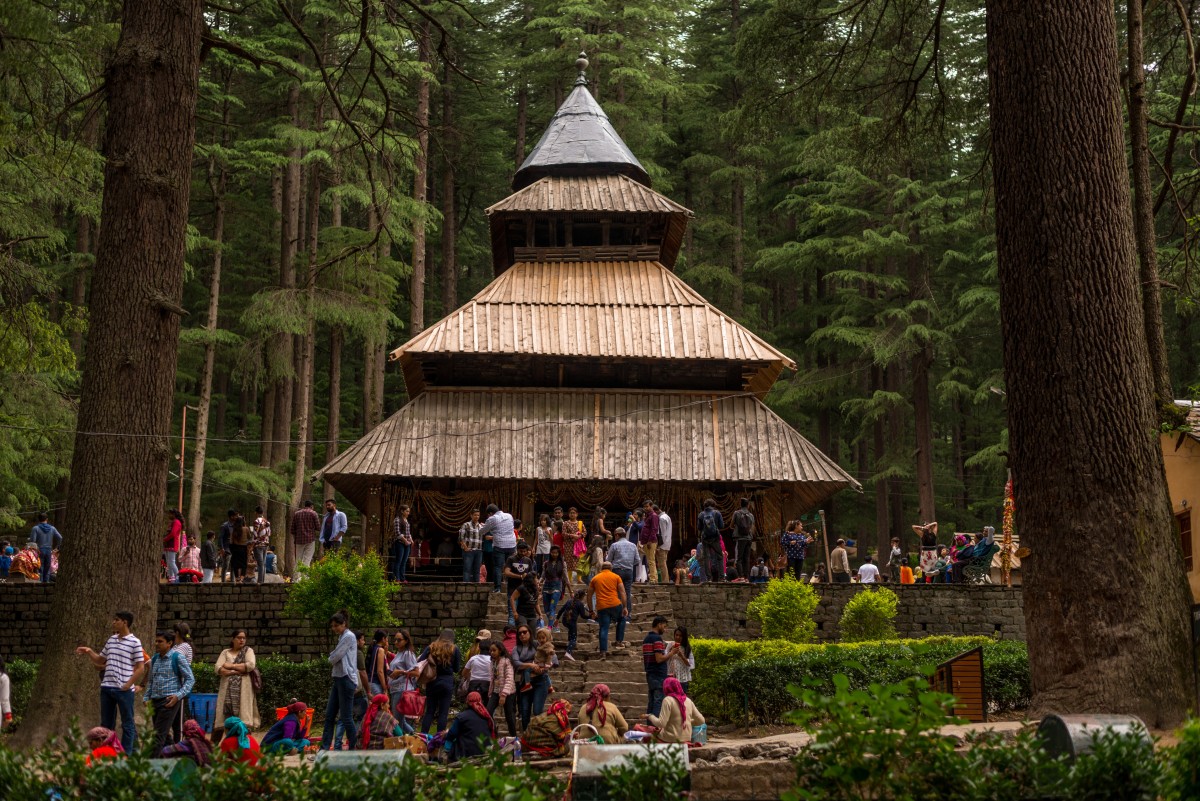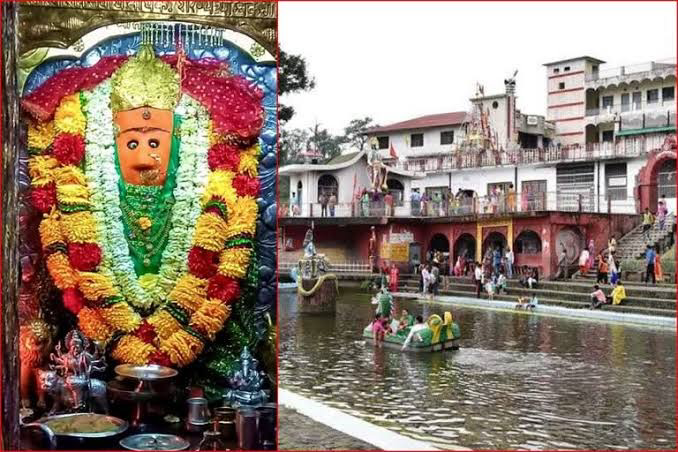Exploring the Spiritual Marvels: 5 Famous Temples of Himachal Pradesh
Himachal Pradesh stands as a haven of natural beauty and cultural richness. This northern Indian state is not only renowned for its breathtaking landscapes but is also home to a myriad of ancient temples that echo the spiritual resonance of the region. It has earned widespread acclaim for its revered temples, attracting pilgrims and seekers of spiritual solace from far and wide. This article talks about the 5 famous temples of Himachal Pradesh, each weaving its tapestry of history, spirituality, and architectural marvel.


The divine aura that envelops these sacred sites adds to the state’s allure, making it a destination where people journey to seek blessings, experience cultural richness, and immerse themselves in the spiritual essence that defines Himachal.
Iconic Temples
1. The Hidimba Devi Temple
The Hidimba Devi Temple, also known as Dhungari Temple, stands in Manali, Himachal Pradesh. This ancient cave temple honors Hidimbi Devi, wife of Bhima from the Mahābhārata. Constructed in 1553 by Maharaja Bahadur Singh, it is perched in the Dhungiri Van Vihar, a cedar forest at the base of the Himalayas.
Hidimba, born into a Rakshasa family, married Bhima after he defeated her brother Hidimb during the Pandavas’ exile in Manali. Their son Ghatotkacha was born from this union.This temple plays a vital cultural role in Manali, especially during Navaratri, when Goddess Hidimba takes the spiritual spotlight. The annual Hidimba Devi Fair, coinciding with spring, witnesses enthusiastic local celebrations, reflecting the profound devotion to the deity.
Timings : 8:00 AM – 6:00 PM
2. Jwala Devi Temple
Located in Himachal Pradesh’s Kangra district, the Jwala Devi Temple is a divine abode dedicated to Jwala Ji, depicted by eternal flames. This temple holds a sacred significance as one of the 52 Shakti Peethas, believed to be the spot where the tongue of Goddess Sati fell. A unique feature of the temple is its absence of an idol, making the five conducted aartis the primary attraction.
The temple’s eternal flames are believed to embody the nine forms of Goddess Durga, burning ceaselessly without external fuel. Devotees often offer Rabri to the Goddess. A noteworthy nearby site is the Jwalamukhi Cave, originally with three openings, now reduced to one, housing spring water.This temple not only stands as a beacon of spiritual devotion but also showcases the mystical and miraculous aspects attributed to the sacred flames.
Timings : 5:00 AM – 10:00 PM (Summer)/ 6:00 AM – 9:00 PM (Winter)
3. Shri Shiv Temple Baijnath
Situated in Himachal Pradesh, Baijnath Temple stands as a revered sanctuary where Lord Shiva, known as the ‘God of Healing,’ is worshipped. This temple, also known as Vaidyanath, embodies Lord Shiva’s avatar dedicated to alleviating devotees from miseries and pain. Its waters, believed to possess medicinal properties, attract thousands of devotees annually seeking healing.Constructed in 1204 A.D. by devoted merchants Ahuka and Manyuka, Baijnath Temple, located just 16 km from Palampur, offers a haven for those seeking peace and tranquility in the divine embrace. Notably, it is one of the rare temples in India where both Lord Shiva and Demon King Ravan are revered.
Intriguingly, Baijnath Temple houses one of the 12 jyotirlingas established by Lord Shiva, symbolizing unadulterated divine light and power. Set against the picturesque backdrop of the Dhauladhar Himalayan Range, the ancient temple juxtaposes its rustic charm with the ethereal beauty of the snow-capped peaks. This juxtaposition creates an atmosphere of marvel and satisfaction, making Baijnath Temple a spiritual and visual delight for pilgrims and visitors alike.
Timings : 6 AM to 8 PM
4. Shakti Peeth Shri Chamunda Devi Temple
Nestled a mere 10 km from Palampur, the ancient Chamunda Devi Temple graces the banks of the Baner River. Revered as one of the 51 shakti peethas, this temple is dedicated to Chamundeshwari Devi, one of the seven matrikas. Legend has it that Chamunda, born from the eyebrow of Goddess Durga, emerged with the mission to vanquish the demons Chanda and Munda. Following a fierce battle, she triumphed over these generals of demon kings Shumbha and Nishumbha.Beyond its spiritual significance, the temple complex hosts an ayurvedic dispensary, a library, and a Sanskrit college. For the convenience of devotees, a temple guest house is also present within the premises. The Chamunda Devi Temple stands as a major attraction in Palampur, not only for its hilltop location but also for the captivating legends that surround it. Considered one of the holiest temples in the region, it draws both locals and travelers alike.
This ancient temple, dating back to the 16th century, holds spiritual tales within its walls. Legend has it that around 400 years ago, a king and a priest sought Chamunda Devi’s consent to shift the idol to a more accessible location. The goddess appeared in the priest’s dream, guiding him to the exact spot where the idol would be discovered. Acting upon the divine guidance, the king and his men recovered the ancient idol, and the temple was built at the sacred location.
Timings : 6:00 AM TO 9:00 PM
You may also read – https://himachal.blog/10-best-eating-places-in-dharamshala/
5. Naina Devi Ji Temple
Perched gracefully on a picturesque hilltop in the Bilaspur District of Himachal Pradesh, the revered Shri Naina Devi Ji Temple stands as a prominent place of worship. This sacred site holds distinction as one of the 51 Shakti Peethas, representing the fallen eyes of Goddess Sati.Devotees flock to the Naina Devi Temple throughout the year, with a particularly heightened presence during festive times. Revered as one of the nine divine powers in Himachal Pradesh, this temple is dedicated to Shri Naina Devi, a manifestation of Goddess Shakti.
For Hindu pilgrims, the Naina Devi Temple is a sacred destination to pay homage to the goddess. Legend has it that during Sati’s self-sacrifice, her eyes fell at this spot, leading to the construction of the temple in her honor. The term ‘Naina,’ meaning ‘eyes,’ signifies the goddess’s association with this divine abode.Within the temple complex, a centuries-old Peepal tree stands as a testament to the site’s enduring spiritual significance. This sacred grove adds to the tranquil aura of the Naina Devi Temple, making it a cherished destination for devotees seeking solace and divine blessings.
Timings : 4:00 AM to 10:00 AM and during Navratras the timing of Live Aarti/Darshan is from 2:00 AM to 12:00 AM.
















